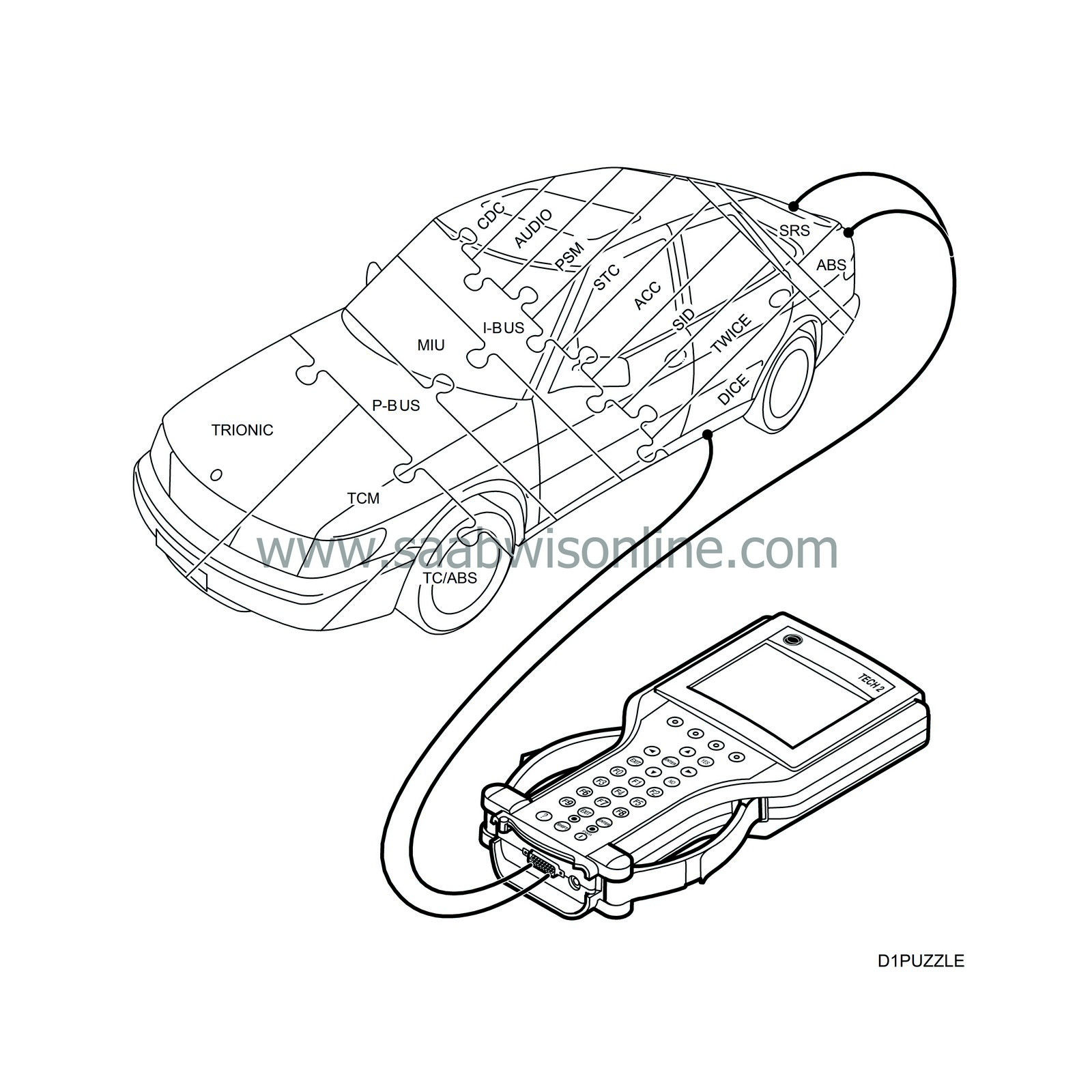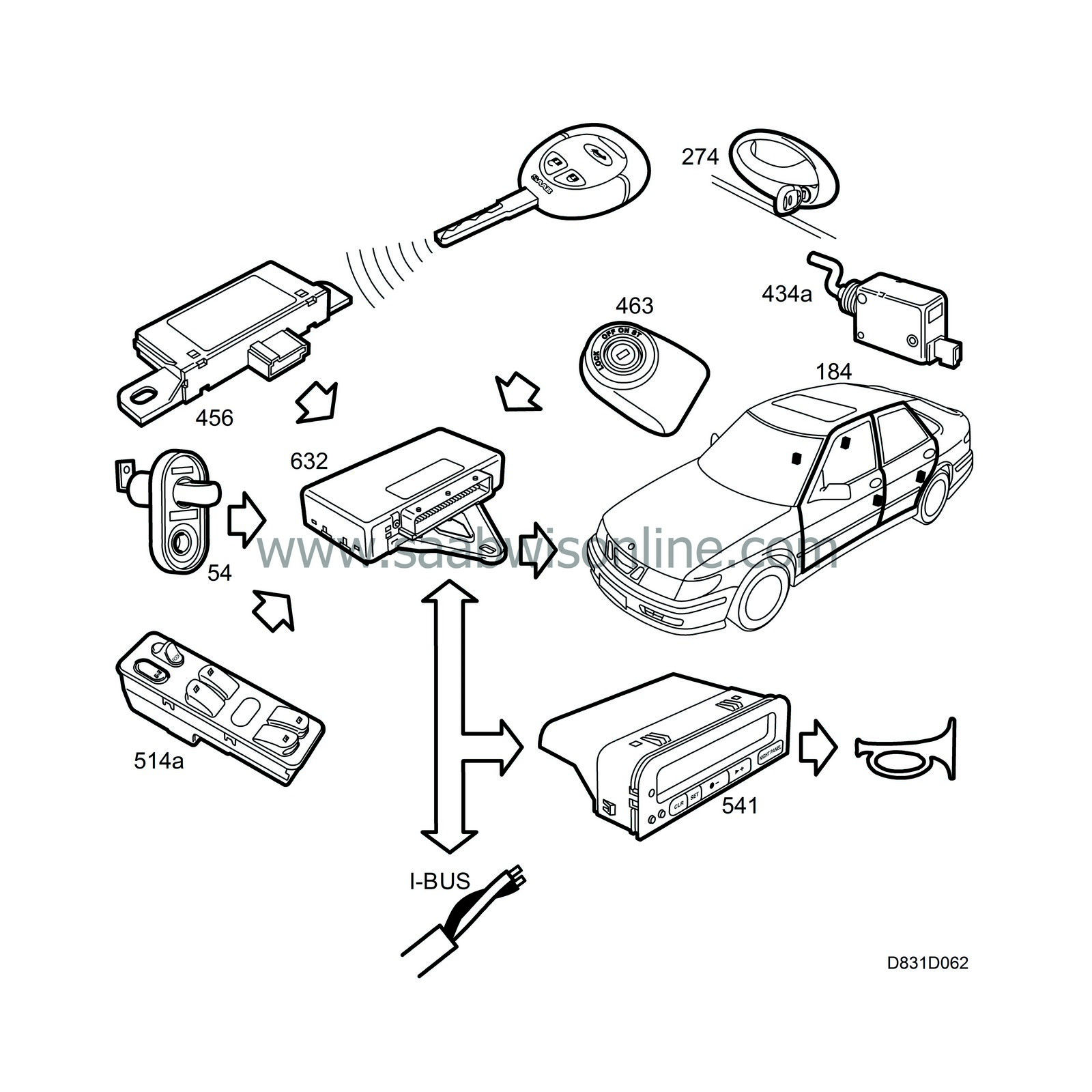Brief description, central locking system
| Brief description, central locking system |
In each door there is a lock unit, which in the driver's door consists of a lock cylinder, microswitch, electric motor and lock. The other doors only have an electric motor and a lock. The central locking system is controlled by the TWICE control module. Locking/unlocking is possible with the key, remote control or the button on the centre console. The central locking system cannot be operated with the remote control when the key is in the ignition.
The central locking system can be operated with the key from the driver's door. The lock has a freely rotating lock cylinder, which means that the cylinder will spin around if the correct key is not used or if someone tries to break into the car.
The central locking system cannot be locked from the inside with a lock button in the driver's door, only with the button on the centre console. The lock buttons on the doors lock and unlock each respective door. The convertible does not have a lock button on the centre console, instead the central locking system can be operated with the lock buttons in the doors.
The car is delivered with two keys/remote controls. Two further remote controls can be programmed, which means that there can be a maximum of four keys/remote controls for each car. In addition, a key blank is supplied as a spare for the central locking system. This key does not have a transponder, which means that it cannot be used to start the car.
When the Theft Security Lock (TSL) system is activated, all the car's locks are deadlocked and it is not possible to unlock the doors using the door lock buttons or the lock button in the centre console. TSL cannot be activated when a door is open.
On the US and CA markets, cars are equipped with separate unlocking of the driver's door as standard. The separate unlocking feature means that the door is first unlocked separately and the remaining doors are unlocked when the key is turned a second time or when the button on the remote control is pressed a second time as well as when the button on the centre console is activated a second time.
If the central locking system locked and TSL activated using the remote control or key (locked from outside), the central locking system will unlock when the key is turned to the ON position in the ignition switch and the correct immobilizer code has been identified. This is a safety feature to avoid driving off in a car with TSL activated.
| P-bus and I-bus |

In the Saab 9-3, fewer control modules are connected to a bus system compared to the Saab 9-5.
The two bus systems are I-bus (Instrument bus) and P-bus (Powertrain bus).
Both buses are connected to the main instrument unit (MIU). The buses are electrically isolated from each other.
The P-bus has a communication speed ten times faster than that of the I-bus.
All information sent out by a control module is available to all control modules connected to a bus. The MIU is responsible for making sure that information available on one bus also is available on the other bus.



